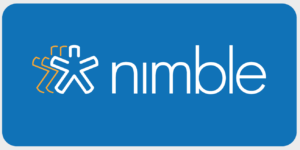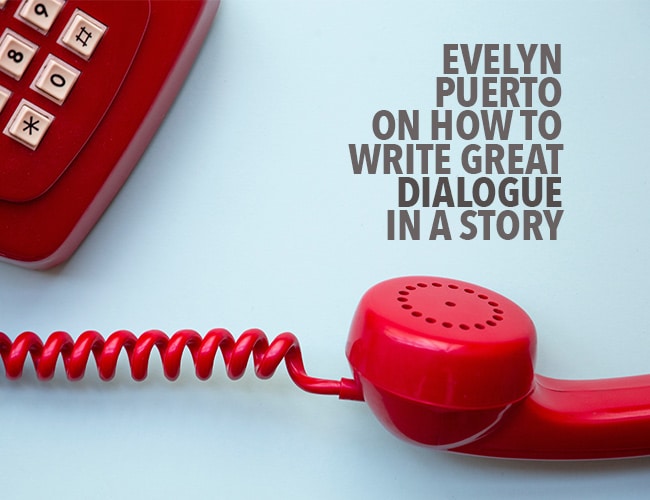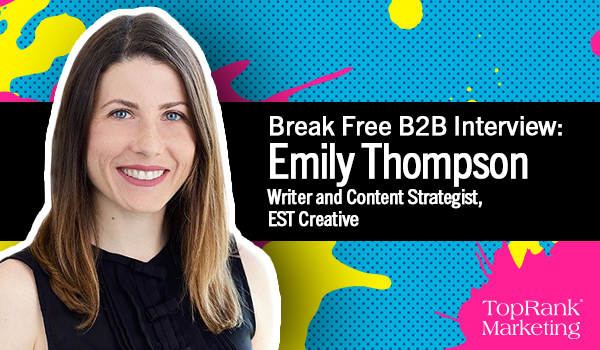http://feedproxy.google.com/~r/markgrow/~3/Sp7-kXLDRHs/

I’ve had a restful break to think about the direction of my work and what’s next for me in the coming year. One observation is that I’ve had a somewhat negative tone to many posts from the past two years. I’ve been a consistent purveryor of tech fear.
For example, on this blog and in my Marketing Companion podcast, I’ve fretted about
- Abuses of our privacy
- The urgent need for regulation
- Amount of power consolidated in the tech giants
- Fake news and democracy
- Smartphone spying
- Social media addiction
- Data breaches
- Marketing technology that spams and annoys people
… well, you get the idea.
I don’t regret creating any of this content, but I decided that I need to have a more balanced tone in my work. Overall, I’m an optimist when it comes to the intersection of technology, marketing, and humanity. With the dawn of a new decade, optimism is in short supply and I aim to do better.
The persistence of tech fear
 Fear of our technological future has been with us since the dawn of the Industrial Age. I remember reading how the train companies were against telephones because they were afraid people would stop traveling!
Fear of our technological future has been with us since the dawn of the Industrial Age. I remember reading how the train companies were against telephones because they were afraid people would stop traveling!
The advent of the automobile created concerns about congestion and accidents.
When the early portable photographic cameras came out, there was a disgusted revolt by people who said taking pictures in a public park invaded their privacy.
Concerns that humanity has taken a technological wrong turn, or that particular technologies might be doing more harm than good, have been with us for centuries. For any new technology, its drawbacks initially seem to outweigh its benefits. When this happens with several technologies at once, the result is a wider sense of techno-pessimism.
However, that pessimism can be overdone.
Benefits and risks
There was a recent article in The Economist which pointed out that we take many benefits of technology for granted and dwell on the possibilities of unintended consequences. For example, the article points out:
- Worries about screen time should be weighed against the much more substantial benefits of ubiquitous communication and the instant access to information and entertainment that smartphones make possible.
- Fears that robots will steal people’s jobs may prompt politicians to tax them, for example, to discourage their use. Yet in the long run, countries that wish to maintain their standard of living as their workforce ages and shrinks will need more robots, not fewer.
- The remedy to technology-related problems very often involves more technology. AI is being applied as part of the effort to stem the flow of extremist material on social media. The ultimate example is climate change. It is hard to imagine any solution that does not depend in part on innovations in clean energy, carbon capture, and energy storage.
I’m not saying that the debates spawned by “techlash” aren’t important. We must think through the possible consequences of technology … in fact, we need to have more of these broad debates at the highest levels of our policy-making organizations.
That should be a necessary (required?) step in the adoption of important new technologies.
The Economist article suggests that “perhaps the real source of anxiety is not the technology itself, but growing doubts about the ability of societies to hold this debate, and come up with good answers.”
Choosing optimism over tech fear
History still argues, on the whole, for optimism. The technological transformation since the Industrial Revolution has helped curb ancient evils, from child mortality to hunger, thirst, and ignorance.
Yes, the planet is warming and antibiotic resistance is spreading. But the solution to such problems calls for the deployment of more technology, not less. So as the decade turns, I’m trying put aside the gloom — at least a little — and try to be an advocate for the good.
To be alive in the tech-enabled 2020s is to be among the luckiest people who have ever lived. Technology brought me to you!
The tech fear in me and others will persist, but I can also choose to dispense hope.
If you’d like to hear more about tech fear/optimism, practical ideas about machine learning, and a surprising new retail trend, please tune in to the new episode of The Marketing Companion. It’s so easy. Just click here and tune in!
Click here to dive into Episode 180
Resources mentioned in this episode:
Article on the new retail trend of used clothes online
Examples of machine learning initiatives from Britney Muller
Book mentioned in the show > The Inevitable by Kevin kelly
Other ways to enjoy our podcast
- Try this! “Alexa, play the latest episode of The Marketing Companion.”
- Click here to download the latest episode or subscribe in iTunes
- Listen to us on iHeart Radio
- Find us on Google Play
- Find the podcast on Stitcher
- Complete Marketing Companion Episode Guide
- The Marketing Companion YouTube channel
Please support our extraordinary sponsors. Our content is free because of their generosity.
Many thanks to our friend Scott Monty for the awesome show intro. Be sure to check out his introspective newsletter Timeless & Timely, where he covers the latest trends and the oldest principles.
Tim Washer is contributing creative direction to the show and he’s has worked for Conan O’Brien, John Oliver, among others. He helps corporations build more creative cultures.
![]()

 If you’re a business owner or an entrepreneur, you know how hard it is to stay on top of all your contacts and ensure that nothing is falling through the cracks. Nimble is the simple, smart CRM that works directly within Office 365 and G Suite.
If you’re a business owner or an entrepreneur, you know how hard it is to stay on top of all your contacts and ensure that nothing is falling through the cracks. Nimble is the simple, smart CRM that works directly within Office 365 and G Suite.
Nimble plugs into your email inbox and has a browser extension you can use on any website, including social media platforms and third-party apps. You’ll never have to leave the place you’re currently working on to access and update your existing contacts, as well as to create new contact records. Claim 30 percent off an annual license by going to nimble.com/companion and entering the promo code: COMPANION.

![]()
 RSM Marketing provides an indispensable outsourced marketing department! Why struggle with turnover and staffing when RSM clients receive a marketing director and all the resources they need under a flat fee monthly subscription?
RSM Marketing provides an indispensable outsourced marketing department! Why struggle with turnover and staffing when RSM clients receive a marketing director and all the resources they need under a flat fee monthly subscription?
RSM employs dozens of specialists and experienced marketing directors who assist companies ranging from startups to market leaders with thousands of employees. Companies across the country from all categories are choosing this model to overcome marketing complexity and outpace their competition. The typical outsourcing client uses 11 RSM subject matter specialists but pays less than the cost of one of their own employees. RSM provides breakthrough marketing for clients and has been named twice to the INC 5000 list. Visit RSM for special Marketing Companion offers including $5,000 in free services.
 Mark Schaefer is the chief blogger for this site, executive director of Schaefer Marketing Solutions, and the author of several best-selling digital marketing books. He is an acclaimed keynote speaker, college educator, and business consultant. The Marketing Companion podcast is among the top business podcasts in the world. Contact Mark to have him speak to your company event or conference soon.
Mark Schaefer is the chief blogger for this site, executive director of Schaefer Marketing Solutions, and the author of several best-selling digital marketing books. He is an acclaimed keynote speaker, college educator, and business consultant. The Marketing Companion podcast is among the top business podcasts in the world. Contact Mark to have him speak to your company event or conference soon.
Illustration courtesy Unsplash.com
The post Putting tech fear in its place appeared first on Schaefer Marketing Solutions: We Help Businesses {grow}.













